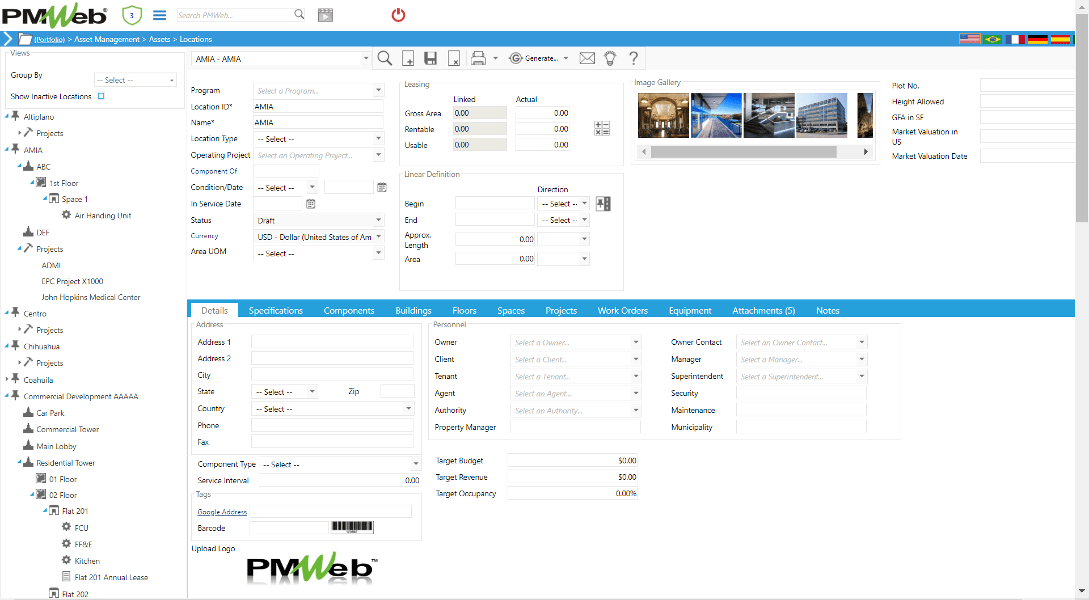Professional property developers understand the significant financial value that acquiring property lands before they are developed. Land Banking is a strategy used by many experienced property developers to secure future property development sites today, at the current price. Those property developers usually buy large tracts of land and put them in their “land bank” to ensure they have a sufficient stock of land for future property developments. The real estate developers can then rezone the ground, put in the necessary roads and infrastructure, obtain property development approvals, and divide the land into parcels to either sell the individual plots or develop the lands on their own.
Using Project Management Information System (PMIS) that covers properties pre-development, development, and post-development phases like PMWeb, property developers can align their strategy and associated processes across those three phases. In the previous articles, many articles were written that cover many methods for the development and post-development phases. In this article, PMWeb will manage, monitor, evaluate and report on the property owner’s land bank. PMWeb Location module will capture the details of all locations where plots owned by the property owner exist. Those could be locations within the same country or across the globe. For each identified location, PMWeb by default location module allows capturing location ID and name, location zoning details, google GIS location and address details, landowner detail, among others.

Within each location, the PMWeb projects module will be used to add projects to map the real estate development company’s plots. In addition to the many default fields available for each project, PMWeb allows adding all additional fields needed to define better a plot of lands such as plot number, plot area, plot usage, building permitted height, gross floor area (GFA) in square foot or square meter. Whether the plot classification is considered to be a brownfield, amber field, or greenfield. Of course, additional fields can also be added if deemed necessary to define the land plot better.
The attachment tab allows attaching all supportive documents for the plots, such as plot maps, ownership deeds, pictures of concept design models, concept design drawings, and third-party valuation reporting. All those documents are usually uploaded and stored into their relevant PMWeb Document Management folder, for which access rights be set to restrict access for those documents. The user can select what documents that are either in PDF or picture file format to be displayed on the project page.

Further, PMWeb allows creating programs to group plots, that is, projects related to each other. For example, those could be plots located at the same location of a country or plots that will be part of developing a new neighborhood or zone. Programs are also used to align the development of the plot with the organization’s real estate development strategy, where each program will be a strategic initiative.

The valuation for each plot will be captured using the PMWeb Contract module. The contract agreement will provide details of the entity that provided the land valuation and all necessary information. The contract module will itemize the plot area in M2, SF, or any unit of measure and enumerate all other elements of the land plot that could be attributed to the land valuation. There will be a unit price of the valuation for each item to calculate the correct land value. The relevant currency can do the valuation as PMWeb allows capturing cost data in multi-currency. The contract module can also be used to capture all land valuations done by different entities, but the selected valuation will have the status as approved, while all other valuations will have the status as rejected.
The change module that is part of the contract module will be used to capture all adjustments made to approved land valuation, whether there are additional items to be added or deleted, change in quantities and increase or decrease in the previously estimated unit price for the valuation.

The contact agreement form and similar to all other forms in PMWeb will be attached with all supportive documents linked to all relevant PMWeb records and imported MS Outlook emails. Those supporting documents could include drawings, BIM models, pictures. agreements, specifications, permits, among many others, will be uploaded and stored in their relevant folders in the PMWeb document management repository.

The contract agreement, or valuation, will be assigned with a workflow to ensure that it has been reviewed and approved by the right organization’s team members. The workflow will identify all needed steps, each step’s duration, responsibility for each step, actions taken for each step, and sequence for performing those steps. PMWeb also allows adding conditions to the workflow steps to incorporate the land valuation report’s approval authority levels.

The data captured in PMWeb can be presented in the desired form and format. For example, a report can be created to display the list of all plots owned by the property developer. The content can be selected depending on the information captured in the project and contract modules. Also, a bar chart visual summarizes the number of plots by the use, which could be commercial, residential, mix, shopping mall, and housing, among others. The report includes three summary cards for gross plots area for all plots, gross floor area in SF for all plots, and valuation for all plots. The report consists of a map that shows the location for all plots, the color of map points is similar to the colors used in the plot use. Of course, the report includes filters for plot use, allowed floor heights, and region where the plot is located.




